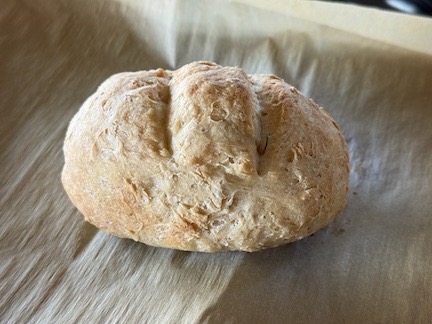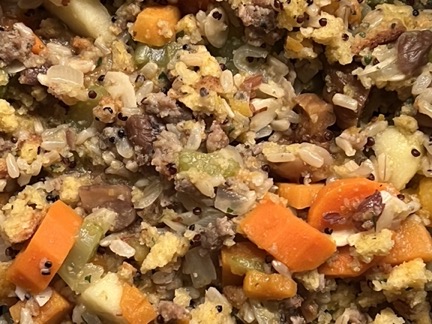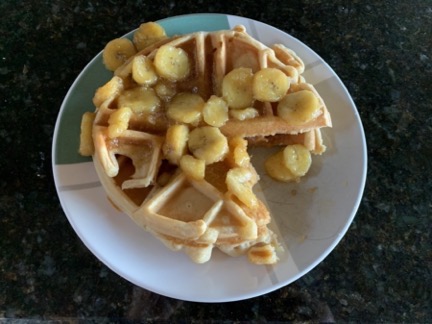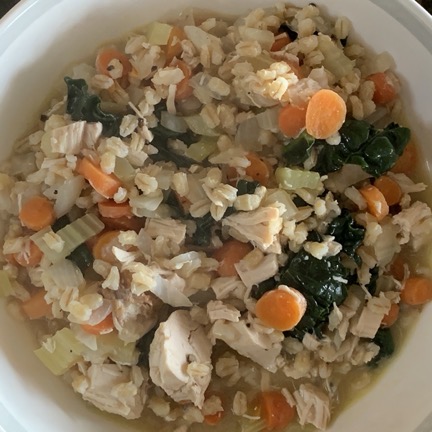My favorite part of Thanksgiving Dinner.
It’s about 7 AM on Thanksgiving day. Even though I’m not hosting Thanksgiving dinner at my home, I’ll be a guest at a friend’s house and I asked her if I could bring the stuffing.
(Yes, I said stuffing. I know it doesn’t go in the bird so it shouldn’t be called stuffing, but I refuse to call it dressing. It’s stuffing. Period. No discussion will be accepted.)
What’s In It This Year
I love making stuffing and eating my stuffing. Why? Because not only is it delicious, but it’s also it’s a meal in itself. It has all kinds of things in it and every year that list is different. Here’s what’s in this year’s stuffing:

A closeup of this year’s stuffing, still in the pan.
Jimmy Dean Sage sausage
- Onions
- Celery
- Carrots
- Garlic
- Sweet potatoes (from my garden)
- Butternut squash
- Brown rice
- Quinoa
- Chestnuts
- Almonds
- Apples
- Figs (dried)
- Stove Top Cornbread Stuffing Mix
So yeah: it has meat, veggies, fruit, and bread in it. Because it has twice as much (by volume, anyway) non-bread ingredients than bread, it’s not really what most folks would call stuffing (or yes, dressing). In fact, it sounds like a meal in itself to me.
It’s great beside turkey or chicken and a good turkey gravy and cranberries can’t hurt it.
I make some version of this every year, whether I’m hosting a meal at my home, going to someone else’s home, or camped out in my RV out in the desert. Way back when I hosted family meals in my old home, I made huge quantities of it. It’s always the first thing I do (after having my coffee, of course) on Thanksgiving day.
I’ve never had any complaints about it. Most folks seem to like it, although probably not as much as I do.
That’s okay. The less they eat, the more is left for me after the big day.
Make It Yourself!
If you’d like to try making this, have at it. But don’t expect me to provide you with measured quantities. I wing it every year with whatever I’ve remembered to buy (like the chestnuts) with whatever I find in the fridge or pantry (most everything else). The only thing I measure is the water that has to hydrate the dried stuffing mix — and that’s so it’s moist enough. Even then, I usually add more so it’s plenty moist and survives some time in the oven or a microwave for reheating or keeping warm. I usually don’t add salt because the stuffing mix and sausage (and likely the gravy that’ll go over it) are salty enough; it’s easier to add salt later than try to remove it, no?
If you’re completely clueless about how to get started, start by lightly browning the sausage (or bacon works, too) with the onions, celery, and garlic. Then add the other ingredients that need cooking, stirring so they get some time on the bottom of the pan. Then stir in the ingredients that don’t need cooking. Then add the water, preheated to boiling. Cover the pan and let it cook for 5 minutes or so. Then add the dry stuffing mix, stir well, and remove from the heat. You’re done; it’ll be done in 5-10 minutes. I try to keep it warm until dinnertime, usually in a covered oven/microwave safe dish in the oven. That helps the flavors meld and the whole thing gets soft.
Yum.




